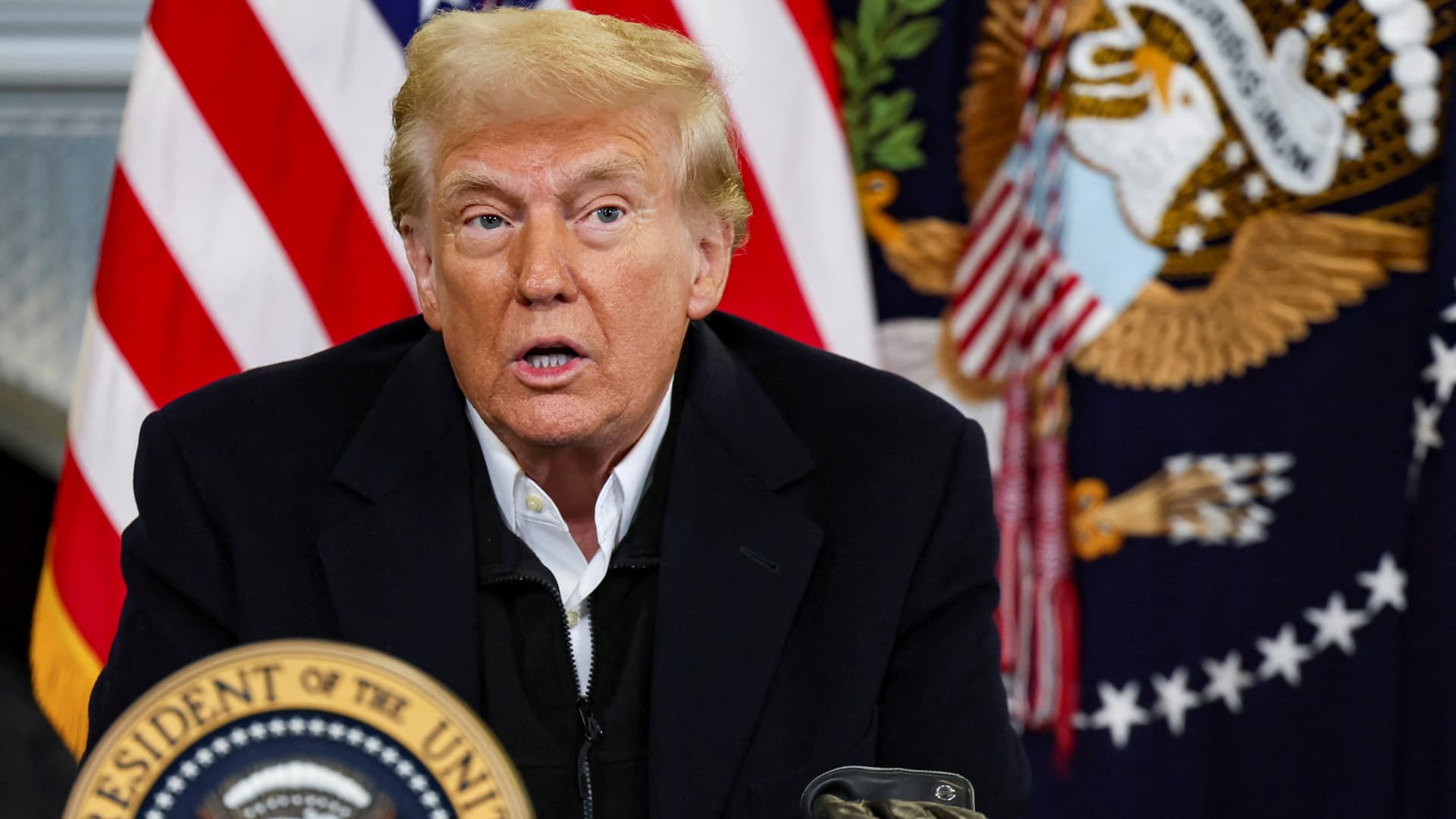The first week of the second Donald Trump presidency brought little clarity on tariff plans, but the rollout of those policies could play a major factor in the next steps for the stock market. Jeffrey Schulze, head of economic and market strategy at ClearBridge Investments, said in a commentary note this week that “policy sequencing” could be an issue for investors going forward. If tariffs are implemented before the benefits of tax cuts and deregulation are visible, it could create pressure for stocks, at least temporarily. “Potential market headwinds may come into greater focus before possible tailwinds are felt. This progression would be a reversal from the first Trump presidency when the benefits from deregulation and tax cuts were felt first, before giving way to 18 months of tariff-induced choppiness,” Schulze said. A chart from ClearBridge showed that the S & P 500 stalled during the middle of Trump’s first stint in the White House, when trade war headlines were affecting the market. The tariffs are well telegraphed, and investors now have more experience with Trump. “Importantly, tariffs should come as less of a surprise to markets this time around, and robust fiscal support to the economy should overpower the tariff drag in subsequent quarters,” Schulze wrote. Of course, the actual content of the tariff policy matters, too, not just the clarity for investors. While Trump has floated the possibility of broad tariffs, many on Wall Street expect a more targeted approach. “The probability of 10%-20% across-the-board blanket tariffs, in our minds, looks extremely low,” Richard de Chazal, macro analyst at William Blair, said in a note to clients. A more modest tariff policy could be welcome news to the stock market, but it may also shift focus to the debt market. Trump has backed tariffs as a revenue raising tool, so lowering them could result in fewer tax cuts or more deficit spending. “The President cannot have it both ways when it comes to the tariff revenue generated. If tariffs are being used as one of the main ‘pay-fors’ to support tax cuts and other spending initiatives, then those tariffs need to stay in place and be more than just a short-term negotiating tool,” de Chazal said. The three major market averages all entered Friday up at least 2% for the week but were down slightly in midday trading.
Stocks off to hot start under Trump, but tariffs loom as potential issue


